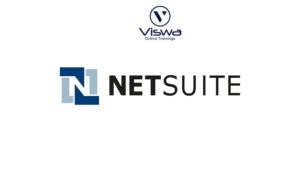Machine Learning Certification Training
One of the top providers of online IT training worldwide is VISWA Online Trainings. To assist beginners and working professionals in achieving their career objectives and taking advantage of our best services, We provide a wide range of courses and online training.
Learners : 1080
Duration : 30 Days
About Course
Designing machines that can learn from examples is a fascinating topic for our machine-learning training. The course covers the required concepts, ideas, and machine learning algorithms. The techniques are based on statistics and probability, which are currently crucial for creating artificial intelligence (AI) systems. Optimal Online Training
Machine Learning Training Course Syllabus
✔ What is MachineLearning
✔ Who is a Data Scientist
✔ How ML is Different from Programming
✔ Languages
✔ Use cases of ML
✔ Techniques used in ML
✔ Data Collection
✔ Data Cleansing
✔ Data Visualization
✔ Web Scrapping
✔ Supervised Learning
✔ Classification
✔ Regression
✔ Un-Supervised Learning
✔ Association Rules
✔ Clustering
✔ Time Series Analysis
✔ Understanding classification using Nearest Neighbours
✔ The KNN algorithm
✔ Different Distance Metrics
✔ Choosing an appropriate k
✔ Preparing data for use with KNN
✔ Strengths And Weaknesses of KNN
✔ Collecting data
✔ Exploring and preparing the data
✔ normalizing numeric data
✔ creating training and test datasets
✔ Training a model on the data
✔ Evaluating model performance
✔ Improving model performance
✔ z-score standardization
✔ Testing alternative values of k
✔ Why KNN is Lazy Learner?
✔ Case Study
✔ Understanding naive Bayes
✔ Basic concepts of Bayesian methods
✔ Probability
✔ Joint probability
✔ Conditional probability with Bayes theorem
✔ The Naive Bayes algorithm
✔ The naive Bayes classification
✔ The Laplace estimator
✔ Using numeric features with naive Bayes
✔ Strengths and Weakness
✔ Spam Filtering Case Study Machine Learning
✔ Collecting data
✔ Exploring and preparing the data
✔ processing text data for analysis
✔ creating training and test datasets
✔ Visualizing text data-word clouds
✔ creating indicator features for frequent words
✔ Training a model on the data
✔ Evaluating model performance
✔ Improving model performance
✔ Case Study
✔ Understanding decision trees
✔ Divide conquer
✔ The Decision tree algorithm
✔ Choosing the best split
✔ Pruning the decision tree
✔ Entropy
✔ Information Gain.
✔ Strengths And Weakness
✔ Identifying risky bank loans using Decision trees
✔ Collect data
✔ Exploring and preparing the data
✔ Data preparation-creating random training and test datasets
✔ Training a model on the data
✔ Evaluating model performance
✔ Improving model performance
✔ Boosting the accuracy of decision trees
✔ Making some mistakes more costly than others
✔ Understanding Regression
✔ Simple linear Regression
✔ Least-squares Estimation
✔ Correlations
✔ Multiple linear regression
✔ Predicting medical expenses using Linear Regression
✔ Collecting data
✔ Exploring and preparing data
✔ Exploring relationships among features- the correlation matrix
✔ Visualizing relationships among features –the scatterplot matrix
✔ Training a model on the data
✔ Evaluating model performance
✔ ODD’s Ratio
✔ Applying Logistic Regression
✔ Training a model on the data
✔ Evaluating the Model Performance
✔ Improving of Model Performance
✔ Other Types of Regressions
✔ Polynomial Regression
✔ Ridge Regression
✔ Lasso Regression
✔ Quantile Regression
✔ Understanding association rules
✔ The Apriori algorithm for association rule learning
✔ Measuring rule interest –support and confidence
✔ Building a set of rules with the Apriori
✔ Identifying frequently purchased groceries with association rules
✔ Creating a sparse matrix for transaction data
✔ Visualizing item support –item frequency plots
✔ Visualizing transaction data-plotting the sparse matrix
✔ Training a model on the data
✔ Evaluating model performance
✔ Improving model performance
✔ Sorting the set of association rules
✔ Taking subsets of association rules
✔ Saving association rules to a file or data frame
✔ Understanding clustering
✔ Clustering as a machine learning task
✔ The K-means algorithm for clustering
✔ Using distance to assign and update cluster
✔ Choosing the appropriate number of cluster
✔ Finding Teen market segments using
✔ K-means clustering
✔ Collecting data
✔ Exploring and preparing the data
✔ Dummy coding missing values
✔ Imputing missing values
✔ Training a model on the data
✔ Evaluating model performance
✔ Improving model performance
✔ Working with classification prediction data
✔ Using confusion matrices to measure performance
✔ Beyond accuracy – another measure of performance
✔ The kappa statistic
✔ Sensitivity and specificity
✔ Precision and recall
✔ The F – measure
✔ Visualizing performance ROC curves
✔ Precision and Recall Curves
✔ Estimating future performance
✔ The holdout method
✔ Cross-validation
✔ Bootstrap sampling
✔ Tuning models for better performance
✔ Hyper Parameters
✔ Creating a simple tuned model
✔ Customizing the tuning process
✔ Improving model performance with meta-learning
✔ Understanding ensembles
✔ Bagging
✔ Boosting
✔ Random forests
✔ Training random forests
✔ Evaluating random forests Performance
✔ Extracting the Data from Twitter/Facebook using API
✔ Cleaning the Data
✔ Performing Text Analysis
✔ Performing Sentimental Analysis
✔ Deployment of Models
✔ Practical Issues
✔ Project Implementation
✔ Case Studies
✔ Cloud Based API’s
| Live Instructor Based Training With Software |
| Lifetime access and 24×7 support |
| Certification Oriented content |
| Hands-On complete Real-time training |
| Get a certificate on course completion |
| Flexible Schedules |
| Live Recorded Videos Access |
| Study Material Provided |
Machine Learning Training - Upcoming Batches
7th NOV 2022
8 AM IST
Coming Soon
AM IST
5th NOV 2022
8 AM IST
Coming Soon
AM IST
Don't find suitable time ?
CHOOSE YOUR OWN COMFORTABLE LEARNING EXPERIENCE
Live Virtual Training
-
Schedule your sessions at your comfortable timings.
-
Instructor-led training, Real-time projects
-
Certification Guidance.
Self-Paced Learning
-
Complete set of live-online training sessions recorded videos.
-
Learn technology at your own pace.
-
Get access for lifetime.
Corporate Training
-
Learn As A Full Day Schedule With Discussions, Exercises,
-
Practical Use Cases
-
Design Your Own Syllabus Based
Machine Learning Training FAQ'S
Artificial intelligence known as “machine learning” works with system programming and automates data analysis to let computers learn from their experiences and act accordingly without having to be explicitly programmed.
Robots, for instance, are programmed to carry out tasks depending on information they gather through sensors. They automatically develop new programmes based on data, and they get better over time.
Data mining can be described as the process in which structured data tries to abstract knowledge or interesting unknown patterns. During this process, machine learning algorithms are used.
Machine learning represents the study, design, and development of the algorithms which provide the ability to the processors to learn without being explicitly programmed.
The possibility of overfitting occurs when the criteria used for training the model is not as per the criteria used to judge the efficiency of a model.
When a model is attempting to learn from a little dataset, overfitting happens. Overfitting can be prevented by using a lot of data. However, if we must create a model from scratch since we only have a tiny database, we can employ a process called cross-validation. In this strategy, a model is typically given two datasets: one with known data for training purposes, and the other with unknown data for the model’s testing. Cross-validation’s main goal is to provide a dataset that will “test” the model during its training phase. ‘Isotonic Regression’ is used to avoid overfitting if there is enough data.
Get ahead in your career by learning Machine Learning through VISWA Online Trainings
Reviews
 Vishnu Gadipudi2023-08-20I Enrolled in VISWA Online Trainings for IBM Integration BUS course . Recently I Completed IBM Integration BUS Batch. It was Really Awesome Experience. Best Place To Learn , Experienced Trainer, Gives Us High Level Knowledge....
Vishnu Gadipudi2023-08-20I Enrolled in VISWA Online Trainings for IBM Integration BUS course . Recently I Completed IBM Integration BUS Batch. It was Really Awesome Experience. Best Place To Learn , Experienced Trainer, Gives Us High Level Knowledge.... Navya Biradavolu2023-08-20I was enrolled for looker Bl Tool,it was amazing experience . especially soft skill batch is one of my favourite batch . overall learning process is quite impressive.
Navya Biradavolu2023-08-20I was enrolled for looker Bl Tool,it was amazing experience . especially soft skill batch is one of my favourite batch . overall learning process is quite impressive. Indla sneha2023-08-20I have joined I have joined VISWA Online TRAININGS for Java full stack course and i have completed Advance Java module. I had a good knowledge of Hibernate, spring,spring boot,spring MVC. Tutor has knowledge in depth and is supportive. Srinadh sir solved all our doubts....
Indla sneha2023-08-20I have joined I have joined VISWA Online TRAININGS for Java full stack course and i have completed Advance Java module. I had a good knowledge of Hibernate, spring,spring boot,spring MVC. Tutor has knowledge in depth and is supportive. Srinadh sir solved all our doubts.... bindu hima2023-08-20I am recently completed Talend course and trainer is Rajendra very professional and helpful. All the doubts were solved in a precise manner.
bindu hima2023-08-20I am recently completed Talend course and trainer is Rajendra very professional and helpful. All the doubts were solved in a precise manner. Tarunasree Gowra2023-08-20"I truly enjoyed this course." Chaitanya sir fantastic-very knowledgeable. Sir give us very informative and clear instruction on how to achieve the goal. Thank you!
Tarunasree Gowra2023-08-20"I truly enjoyed this course." Chaitanya sir fantastic-very knowledgeable. Sir give us very informative and clear instruction on how to achieve the goal. Thank you! Tejaswini Kommu2023-08-20Overall Linux Admin sessions batch was very good. Mr. RAM Krishna teaching was very helpful to remind our basic concepts in linux & networking.
Tejaswini Kommu2023-08-20Overall Linux Admin sessions batch was very good. Mr. RAM Krishna teaching was very helpful to remind our basic concepts in linux & networking. Gopanaboina Mounika2023-08-20It was great learning with such a great and experienced staff. Praveen Sir (Oracle EPM Cloud - FCCS) was very helpful and operations team also very helpful in solving any minor problems students go through process.
Gopanaboina Mounika2023-08-20It was great learning with such a great and experienced staff. Praveen Sir (Oracle EPM Cloud - FCCS) was very helpful and operations team also very helpful in solving any minor problems students go through process. Jyothi Gutlapalli2023-08-20I like to share my experience which provide lots of courses and one of those I recently completed my Salesforce BA Course and I like to tell you it was a great experience and my knowledge and confidence is really boosted after completing this course.
Jyothi Gutlapalli2023-08-20I like to share my experience which provide lots of courses and one of those I recently completed my Salesforce BA Course and I like to tell you it was a great experience and my knowledge and confidence is really boosted after completing this course. Harshibandi2023-08-20Good experience and great learning platform for Hyperion Essbase and Planning. The faculty is also well trained and soft spoken.
Harshibandi2023-08-20Good experience and great learning platform for Hyperion Essbase and Planning. The faculty is also well trained and soft spoken. Chaitu Viswa2023-08-20It was very good session for QlikView. I would like to thank to teacher Mr.Chandu for providing guidance for the required modules. Thanks VISWA Team for giving apportunity to leran new skills.
Chaitu Viswa2023-08-20It was very good session for QlikView. I would like to thank to teacher Mr.Chandu for providing guidance for the required modules. Thanks VISWA Team for giving apportunity to leran new skills.




